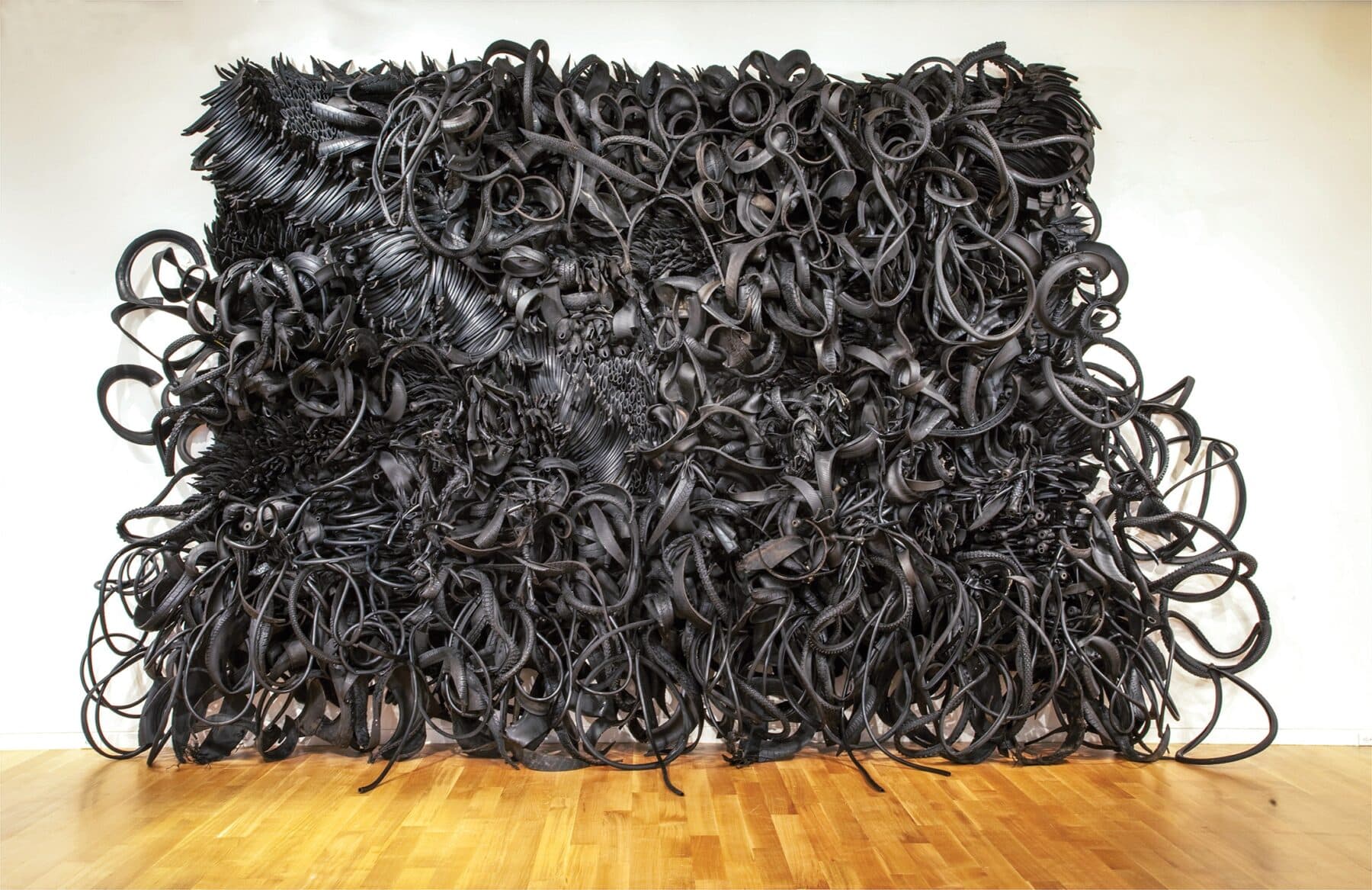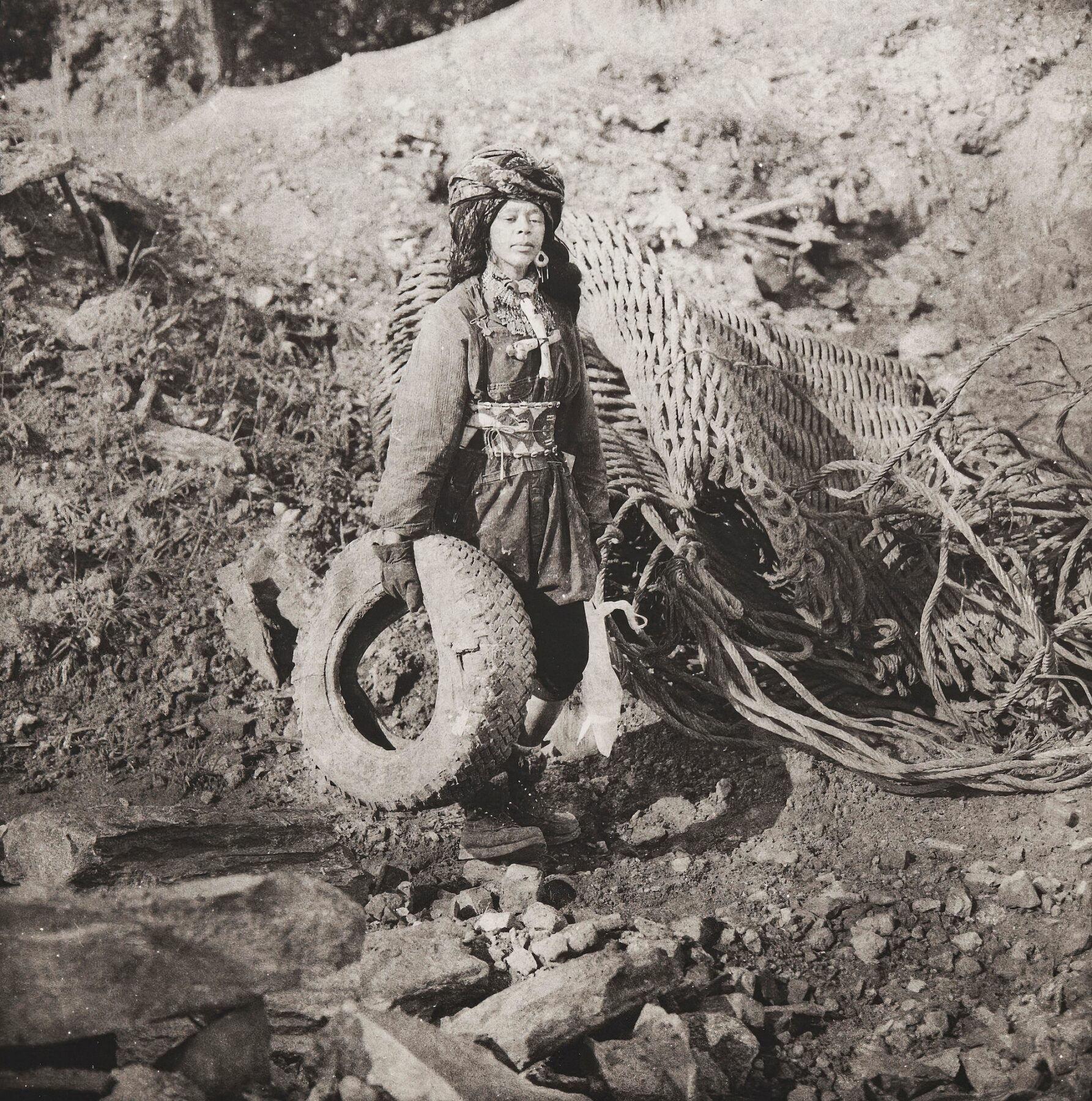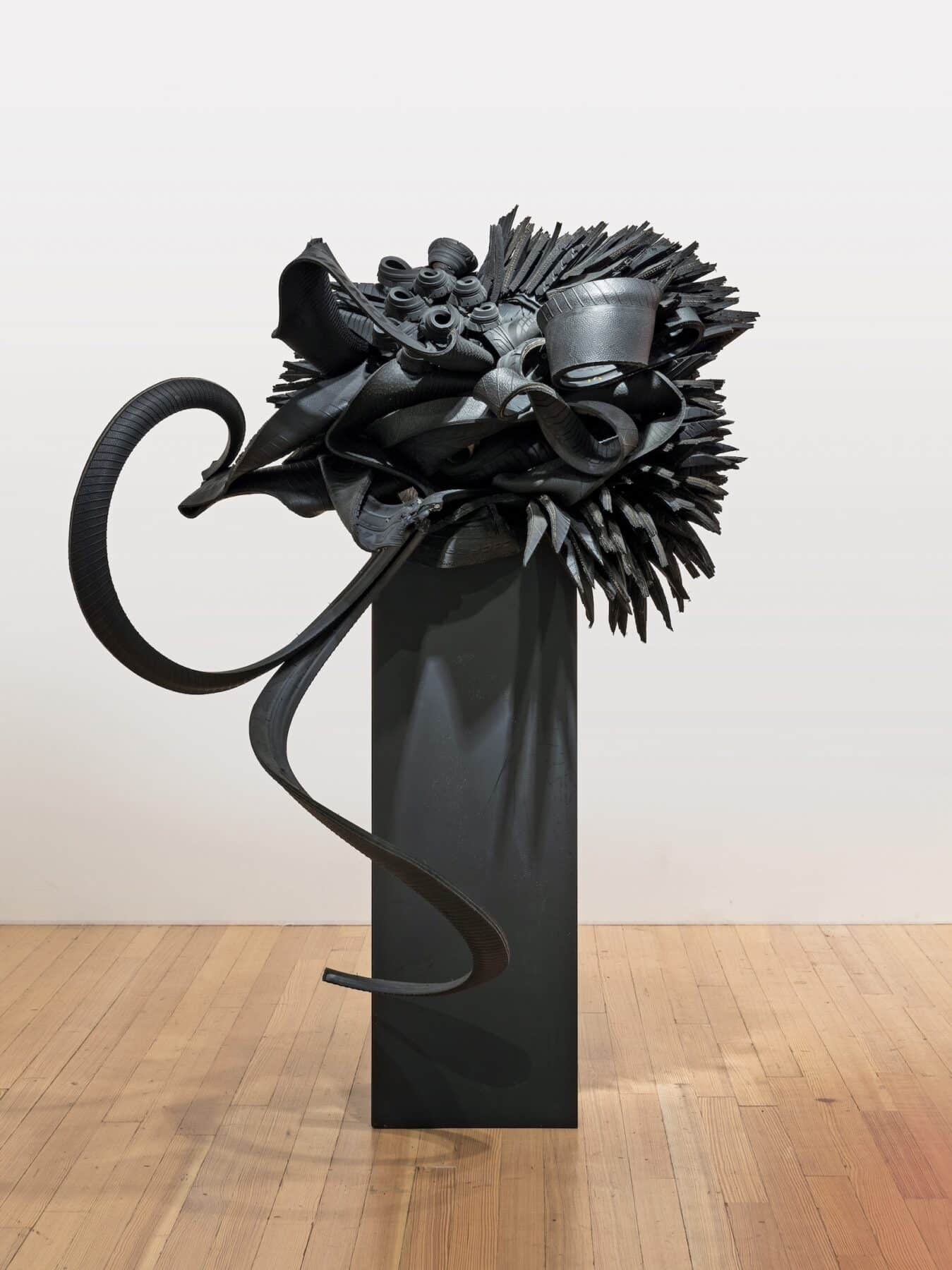Chakaia Booker: Treading New Ground
Chakaia Booker has worked with black rubber tires as her sculptural medium since the 1980s. Early in her career, she experimented with textiles, clay, wood, and found objects, before turning to salvaged tires—retrieved from the streets of New York City’s East Village, where she lives. Through cutting, coiling, and contorting the tires, she transforms this industrial waste into remarkably graceful sculptures that defy their origins. Materiality and modularity are essential elements in her work. Her ability to build texture, movement, and form through repetition creates tactile and seductive surfaces. As she finds beauty in refuse, her reclamation of discarded tires offers a fresh perspective on her materials and on humanity’s relationship with and responsibility to the environment.
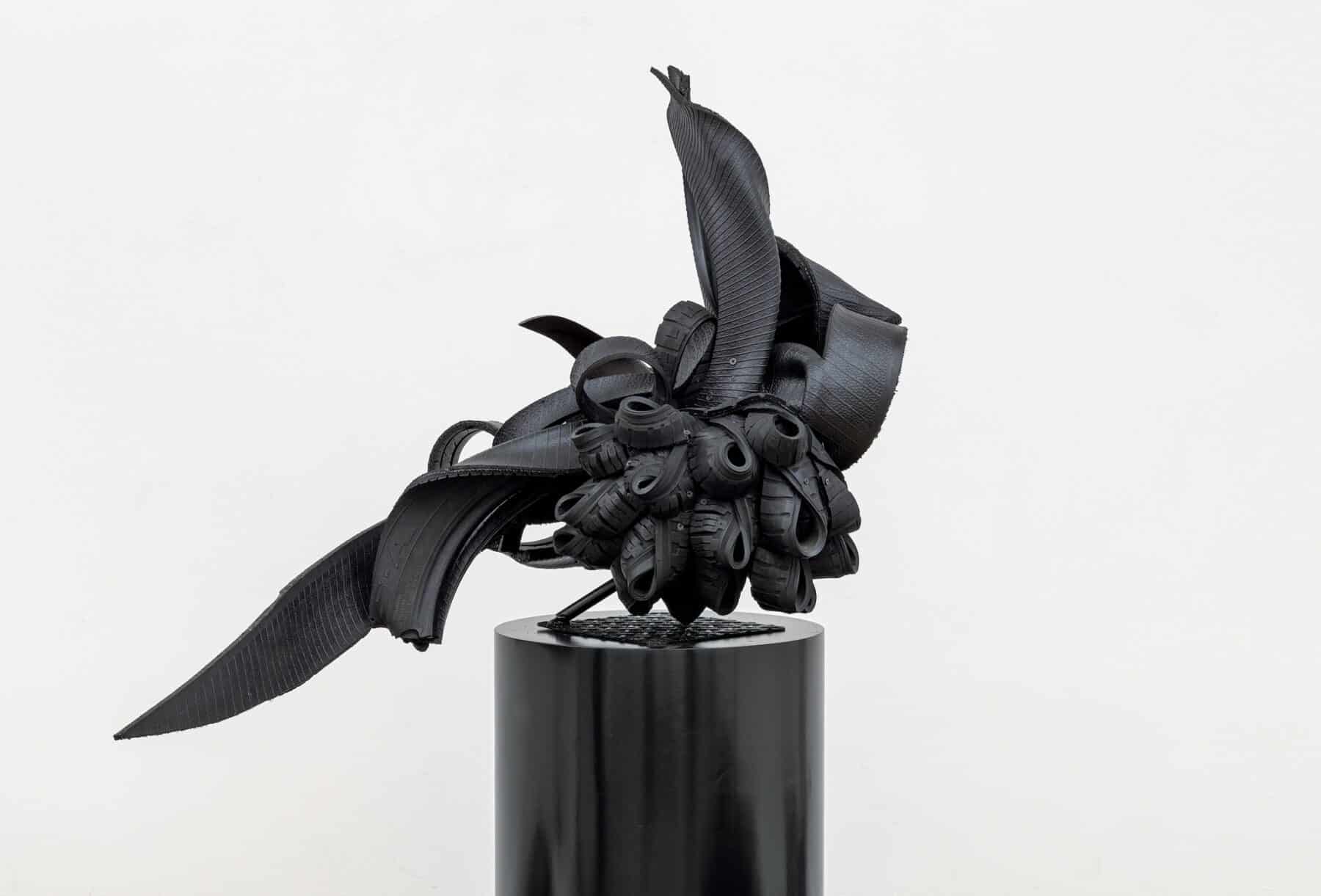
Tires offer a rich array of historical and cultural associations. They relate to labor, transportation, industrialization, and environmental destruction. The tire’s patterning also connects to African traditions of textiles and scarification, and their resiliency and range of tones evokes issues related to the Black body, history, and identity. Booker’s process of transforming scraps into art serves as a metaphor for Black American experiences of struggle and survival.
“My intention is to translate materials into imagery that will stimulate people to consider themselves as a part of their environment—one piece of it,” Booker states. Her sculptures aim to convey a sense of the realities from which the materials emerged while also presenting new possibilities for their use and interpretation. In the context of global natural disasters, ecological advocacy, and humankind’s reckoning with the effects of climate change, Booker projects a new vision for the world through her art.
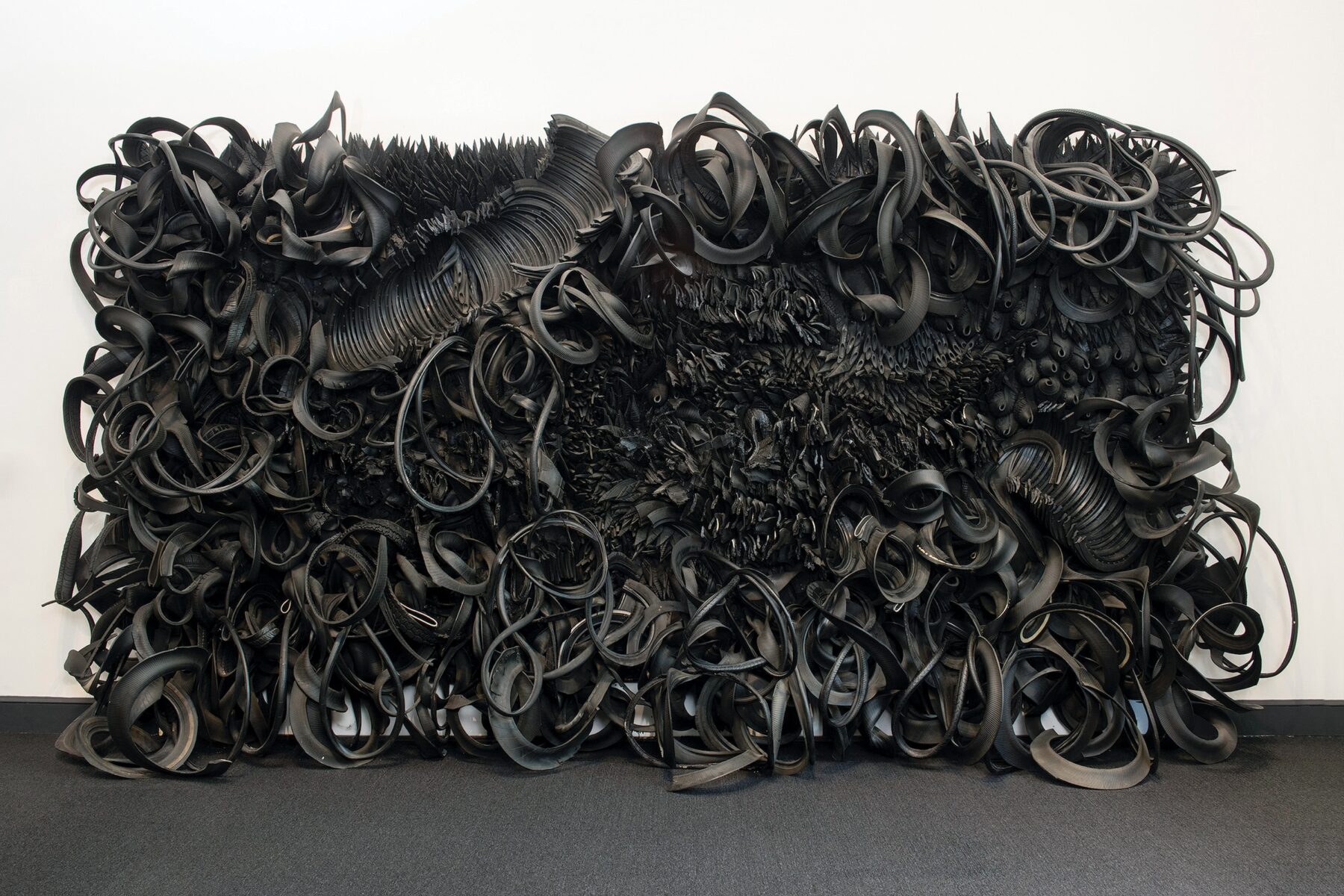
Treading New Ground presents three monumental wall relief sculptures: Acid Rain (2001), It’s So Hard to Be Green (2000), and Echoes in Black (Industrial Cicatrization) (1996). Each measuring 20–21 feet wide, the sculptures feature spiky shards, coiled strips, and looped bands of car, truck, bicycle, and airplane tires. Their titles, materials, and making all point to the social, political, industrial, and emotional dimensions of efforts to care for the environment. Booker’s practice of salvage and reuse reduces tire waste otherwise destined for landfills, where they emit methane gas into the atmosphere. Installed on the walls of the National Gallery of Art, the exhibition offers a setting in which visitors can contemplate Booker’s extraordinary transformation of discarded materials and the implications of her constructions.
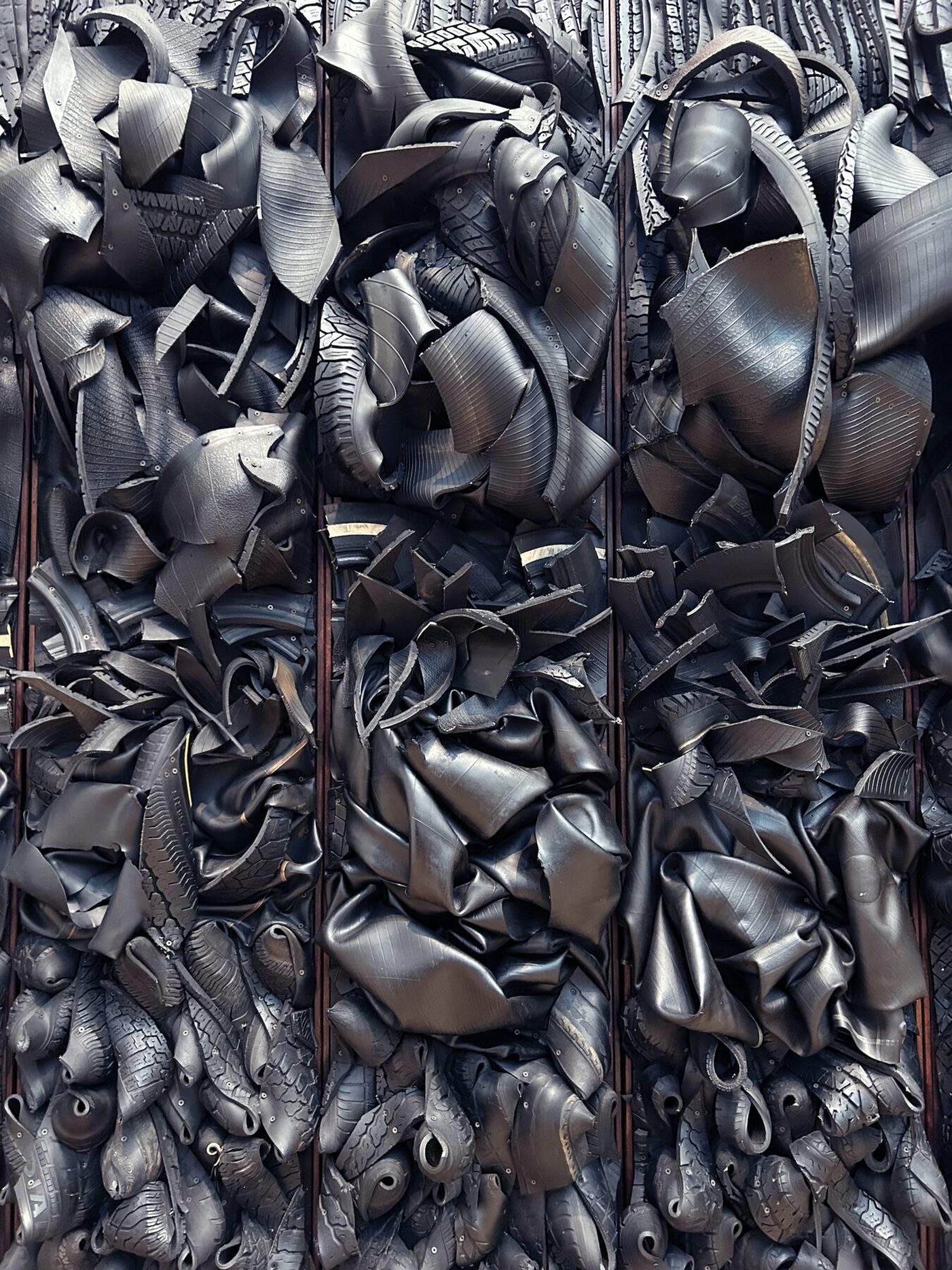
The exhibition also features a six-part photogravure series, Foundling Warrior Quest (II 21C) (2010), which further illuminates Booker’s long-standing commitment to environmentalism. Dramatizing the process of scavenging tires and other materials, the images depict the artist as a mythical figure foraging in a dystopian landscape. Booker created the sepia-toned imagery as a satirical foil to The North American Indian, a set of photogravures from the early 1900s by photographer and ethnologist Edward Sheriff Curtis, whose colonial, romanticized depictions were at odds with the lived reality of Native people. Booker’s series conjures up a distant past as much as it alludes to a future environment stricken by the effects of climate change.
Booker gained international acclaim at the 2000 Whitney Biennial with It’s So Hard to Be Green (2000). She received the Pollock-Krasner Grant in 2002 and a Guggenheim Fellowship in 2005. She has exhibited in group and solo exhibitions nationally and internationally and her work is in more than 40 public collections.
